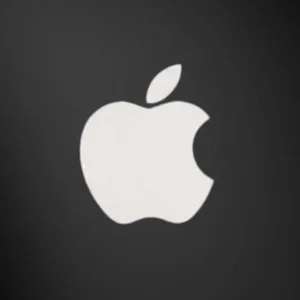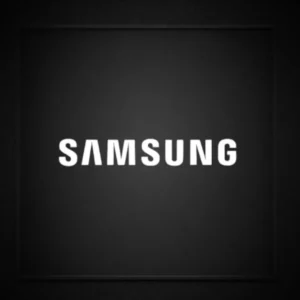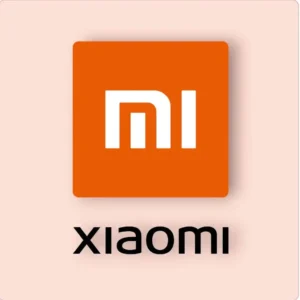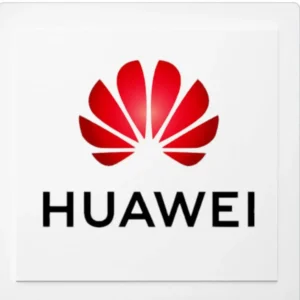Top 10 Best Mobile Brands In 2024
The global smartphone market boasts of many brands, but in this article, we will tell you about the top 10 that deserve your attention. Our rankings are based on the latest quarterly (October-December 2023) shipment data from Omid’s Global Smartphone Report. Also, we have prepared a selection of the most popular smartphones from each brand.
Apple
Samsung
Xiaomi
Transsion
Oppo
Vivo
Honor
Motorola
Huawei
Realme
1. Apple

Known for its innovation and advanced design, Apple Inc. It has an impressive history of success in the mobile industry. From its inception to its current position as a global technology leader, Apple’s journey has been marked by visionary leadership, innovative products, and a relentless focus on quality and user experience. Here’s an in-depth look at the key milestones and strategies that defined Apple’s success in the mobile market.
Origins And Early Inventions
Foundation And Primary Products:
Apple Inc. Founded in 1976 by Steve Jobs, Steve Wozniak and Ronald Wayne. The company’s initial success came with the Apple I and Apple II computers, which revolutionized personal computing. However, it was the introduction of the Macintosh in 1984 that really set Apple apart, demonstrating its commitment to user-friendly design and innovative technology.
Return Of Steve Jobs:
After a period of struggle and declining market share, Steve Jobs returned to Apple in 1997. His return marked a turning point for the company. Jobs’ vision, combined with a series of strategic decisions, revitalized Apple and set the stage for its future success.
The Birth Of The iPhone
Genesis of iphone:
In 2007, Apple launched the iPhone, a product that redefined the mobile phone industry. The iPhone combined a mobile phone, an iPod, and an Internet communicator into one device. Its revolutionary multi-touch interface and sleek design make it stand out from other devices in the market.
Key Innovations Of iphone:
- Touchscreen Interface: The iPhone’s multi-touch interface eliminated the need for physical buttons, providing a more intuitive user experience.
- App Store: Launched in 2008, the App Store has created an ecosystem for developers and users that offers a wide range of apps that enhance the functionality of the iPhone.
- Nice Design: Apple’s emphasis on minimalist and premium design has made the iPhone a desirable device.
Impact On Industry:
The success of the iPhone forced competitors to rethink their strategies and designs. It sets new standards for mobile phones, affecting touchscreens, app ecosystems and mobile internet usage.
Sustainable Innovation And Market Leadership
Iterative Improvement:
Apple’s strategy of releasing new iPhone models every year allows the brand to stay at the forefront of technology. Each iteration brings significant improvements in hardware, software and features.
Important Milestones:
- Iphone 4 (2010): Introduced a retina display and stainless steel frame, setting new standards for smartphone displays and build quality.
- Iphone 5S (2013): Introduces Touch ID fingerprint sensor for improved security and convenience.
- Iphone 6 And 6 Plus (2014): Larger screen sizes to meet growing demand for larger displays.
- Iphone X (2017): Celebrates the 10th anniversary of the iPhone with an edge-to-edge OLED display, Face ID and no home button.
- iphone 11 (2019): Launching the new design of iPhone and surprise the whole world by their innovasion.
- iPhone 14 (2022): The Excellence of smartphone camera that change the whole smartphone market by their excellence camera features.
Technological Advances:
Apple’s custom-designed processors, starting with the A4 chip in iPhone 4, consistently deliver industry-leading performance. The integration of hardware and software allowed Apple to optimize performance, battery life and usability.
Building a robust ecosystem
Integration With Other Apple Products:
Apple’s ecosystem is one of its greatest strengths. Seamless integration between iPhone, iPad, Mac, Apple Watch and Apple TV creates a unified user experience. Features like Handoff, Continuity and AirDrop improve productivity and convenience across devices.
Ecosystem of Services:
Apple has expanded its ecosystem with several services, including iCloud, Apple Music, Apple Pay, and the App Store. These services not only add value to the equipment, but also generate significant revenue.
Customer Loyalty and Brand Strength:
Apple’s commitment to quality, innovation and customer satisfaction has created a loyal customer base. The brand’s strong personality and premium positioning have enabled it to maintain strong profitability.
Challenges And Sustainability
Solving Market Problems:
Apple faces numerous challenges, including intense competition, supply chain issues and regulatory scrutiny. However, its strong brand, loyal customer base and financial resources allowed it to effectively address these challenges.
Global Expansion:
Apple has strategically expanded its presence in international markets, particularly in China and India. Customized strategies such as local marketing and partnerships have helped Apple tap into this fast-growing market.
Sustainability And Innovation:
Apple is committed to environmental sustainability with initiatives such as using recycled materials in its products and reducing its carbon footprint. Innovation in manufacturing processes and product design reflects this commitment.
Future prospects
Continuous Innovation:
Apple’s future success will depend on its ability to continue to innovate. With advances in potential initiatives in new product categories such as augmented reality (AR), artificial intelligence (AI), and electric cars, Apple is well positioned to maintain its leadership.
Extended Ecosystem:
Expanding Apple’s ecosystem across health and fitness, financial services and entertainment will further strengthen its products in consumers’ lives, creating new opportunities for growth.
Focus On Privacy And Security:
Apple’s focus on user privacy and security will continue to be a key differentiator, especially as concerns about data privacy grow.
Apple’s success story in the mobile industry is a testament to its vision, innovation and relentless pursuit of excellence. From revolutionizing the iPhone to building a robust ecosystem, Apple has consistently set new standards and disrupted the industry. By innovating and expanding its offerings, Apple intends to remain a dominant force in the mobile communications market for many years to come.
2.Samsung

Samsung Electronics, a global technology leader, has strengthened its position as a leading mobile phone manufacturer with a rich history of innovation and sustainability. By 2024, Samsung will continue to dominate the mobile industry by offering cutting-edge technology, versatile designs and a wide range of products for various market segments. Below is a detailed overview of Samsung Mobile’s success story, its milestones, strategies and future prospects.
Early Start And Early Success
Funding And Diversification:
Samsung was founded in 1938 as a South Korean trading company by Lee Byung-chul. Over the decades, Samsung diversified into various industries, including textiles, food processing, and finally electronics in the 1960s. Founded in 1969, Samsung has marked the company’s foray into the electronics technology sector.
Early Mobile Phones:
Samsung’s foray into the mobile phone market began in the late 1980s with the development of car phones and then basic mobile phones. The company gained significant popularity in 1990 with the release of South Korea’s first mobile phone, the SCH-100, and continued to innovate with feature-rich devices such as the SGH-T100, which featured a color screen and a foldable design.
Galaxy Rising Series
Galaxy Series Introduction:
The launch of the Galaxy S in 2010 was a turning point for Samsung. The Galaxy S series was designed to compete directly with Apple’s iPhone and quickly became popular for its powerful hardware, Android operating system and sleek design.
Key Innovations:
- Display Technology: Samsung’s Super AMOLED displays set new standards in screen quality, delivering vibrant colors, deep blacks and energy efficiency.
- Processor Development: Samsung’s Exynos processor uses Qualcomm’s Snapdragon chip to ensure high performance and energy efficiency.
- Camera Enhancements: Samsung consistently pushes the boundaries of mobile photography with features like multiple lenses, advanced image processing, and high-resolution sensors.
Market Leadership:
The Galaxy S series, along with the Galaxy Note series launched in 2011, established Samsung as a leader in the smartphone market. The Galaxy Note, with its large screen and S Pen stylus, created a new category of phablets that appeal to both consumers and professionals.
Strategic Milestones And Innovation
5G Leadership:
Samsung was one of the first companies to adopt 5G technology, releasing the Galaxy S10 5G in 2019. By 2024, Samsung’s 5G devices will be widely adopted for their performance, connectivity and seamless integration with evolving 5G networks around the world.
Folding Phone:
Samsung pioneered the foldable phone market with the release of the Galaxy Fold in 2019. By 2024, the Galaxy Z Fold and Galaxy Z Flip series have gone mainstream, offering innovative designs and flexible displays that cater to a growing segment of consumers looking for compact and compact devices. edge technology.
Sustainable Initiatives:
Samsung is committed to sustainability by incorporating environmentally friendly practices into its manufacturing processes and product design. The use of recycled materials, energy-efficient components and initiatives to reduce e-waste make Samsung a responsible corporate leader.
Software And Ecosystem:
Samsung’s One UI, an overlay of the Android operating system, provides a user-friendly interface that enhances the overall experience. Integration with other Samsung devices such as smartwatches, tablets and smart home products creates a holistic ecosystem that adds value to users.
Flagship Product 2024
Galaxy S24 Ultra
Key Benefits:
- Display:8-inch Dynamic AMOLED 2X with 120Hz refresh rate.
- Processor: Exynos 2300/Snapdragon 8 Gen 3 (depending on region)
- Camera: Quad rear camera 108MP + 12MP + 10MP + 10MP, front camera 40MP.
- Battery: 5000 mAh with 45W fast charging.
- Os: Android 14 with One UI 6.
The Galaxy S24 Ultra exemplifies Samsung’s commitment to excellence with a stunning display, versatile camera system and powerful performance. It caters to both high-end consumers and professionals who demand the best in mobile technology.
Galaxy Z Folding 5
Key Benefits:
- Display:6-inch foldable Dynamic AMOLED with 120Hz refresh rate.
- Processor: Snapdragon 8 Gen 3
- Camera: 50MP + 12MP + 12MP triple rear camera, 10MP front camera.
- Battery: 4500 mAh with 25W fast charging.
- Os: Android 14 with One UI 6.
The Galaxy Z Fold 5 represents the pinnacle of foldable technology, offering a large, immersive display that folds into a compact form factor. Its multitasking and innovative design will appeal to tech enthusiasts and productivity-oriented users.
Challenges And Sustainability
Competition And Market Dynamics:
Samsung faces stiff competition from other big brands like Apple, Xiaomi and Huawei. However, its ability to innovate and adapt to market trends has allowed it to remain at the forefront. The company’s diverse product portfolio, from low-cost models to premium flagships, allows it to serve a wide range of customers.
Supply Chain Management:
Samsung’s vertical integration and strong supply chain management have played an important role in maintaining the company’s leadership in the market. The ability to manufacture key components such as displays and processors in-house provides a competitive advantage in terms of cost control and innovation.
Worldwide Presence:
Samsung has a global presence with global manufacturing facilities and research centers ensuring that it can meet the needs of various markets. Specially developed strategies for regions like North America, Europe and Asia have contributed to its massive success.
Future Prospects
Continuous Innovation:
Samsung’s commitment to research and development ensures that it will continue to lead technological advancements. New technologies such as artificial intelligence, augmented reality and advanced biometrics may be integrated into future devices, further enhancing the user experience.
Ecosystem Expansion:
The expansion of Samsung’s ecosystem, including smart home products, wearables and connected services, will create new growth opportunities. Integrating these products with Samsung smartphones will provide a seamless and seamless experience.
Sustainability And Corporate Responsibility:
Samsung’s emphasis on sustainability and corporate responsibility will play an important role in its strategy. Initiatives to reduce carbon emissions, promote recycling and develop energy-efficient products will resonate with environmentally conscious consumers.
Samsung Mobile’s success story in 2024 is a testament to its resilience, innovation and strategic foresight. From the early days of early mobile phones to the current era of 5G and foldable devices, Samsung has consistently pushed the boundaries of technology. With a strong focus on quality, user experience and durability, Samsung is poised to be a leader in the mobile industry for years to come.
3.Xiaomi

Xiaomi, a brand synonymous with innovation and accessibility, has made significant strides in the global smartphone market since its inception. By 2024, Xiaomi will become a major player in the mobile industry, known for its high-quality devices, revolutionary business model and commitment to user-centric innovation. Here’s a brief overview of Xiaomi Mobile’s success story till 2024.
Establishment And Rapid Growth
Founded in 2010 by Lei Jun, Xiaomi began with the idea of making high-quality technology accessible to everyone. The company’s first product, MIUI, a custom ROM based on Android, attracted a loyal following Capitalizing on this early success, Xiaomi launched its first smartphone, the Mi 1, in 2011, which was sold exclusively online, allowing for competitive pricing by cutting out the middleman.
Innovation And Market Disruption
Xiaomi quickly became known for offering premium features at affordable prices. The company’s direct-to-consumer online sales model, combined with limited flash sales, creates excitement and shortages that drive demand. This innovative approach has disrupted traditional sales models and made Xiaomi a serious contender in the smartphone market.
Global Expansion And Diverse Product Portfolio
By 2024, Xiaomi will have a strong global presence, with significant market shares in Asia, Europe and Latin America. The company’s expansion strategy includes adapting products to local markets and partnering with e-commerce platforms and local retailers.
Xiaomi’s product portfolio includes the flagship Mi series, the budget Redmi series and the gaming Black Shark series. Launching in 2024, the Mi 12 Ultra exemplifies Xiaomi’s innovation with its advanced camera system, powerful Snapdragon 8 Gen 3 processor and stunning AMOLED display. Meanwhile, the Redmi Note series continues to dominate the mid-range segment, offering exceptional value for money.
Key Innovations And Technological Leadership
Xiaomi’s commitment to innovation is the cornerstone of its success. The company is consistently pushing the boundaries of smartphone technology. In 2024, Xiaomi is leading in several areas:
- Camera Technology: Xiaomi’s collaborations with renowned camera brands and investment in AI-powered photography enable smartphones to deliver exceptional photo and video quality.
- Battery And Charging: Xiaomi introduces fast charging technology for the first time: Mi 12 Ultra is equipped with 120W wired charging and 50W wireless charging, which significantly reduces charging time.
- Software Features: MIUI, Xiaomi’s custom skin for Android, offers a user-friendly interface with frequent updates and powerful customization options to enhance overall usability.
Sustainable Development And Ecosystem Expansion
Xiaomi has made significant strides in terms of durability. The company is committed to reducing its carbon footprint by using recycled materials in its products and packaging. Xiaomi’s focus on creating durable and high-quality devices also helps reduce e-waste.
Xiaomi’s ecosystem expansion, known as “Mi Ecosystem”, includes a wide range of connected devices such as smart home products, wearables and lifestyle gadgets. This ecosystem strategy not only enhances the user experience, but also creates an overall experience that keeps customers within the Xiaomi brand.
Future Prospects
Xiaomi’s future looks promising as the company plans to further innovate and expand its global presence. The company is investing heavily in new technologies like artificial intelligence, 5G and Internet of Things (IoT) to stay ahead of the competition. Xiaomi’s strategy of providing cutting-edge technology at an affordable price will continue to attract a wide range of consumers.
Xiaomi Mobile’s success story in 2024 is a testament to its innovative spirit, strategic market approach and commitment to deliver value to customers. From its revolutionary entry into the smartphone market to its current status as a global tech giant, Xiaomi has consistently pushed the boundaries of what’s possible in mobile technology. With a strong focus on quality, affordability and innovation, Xiaomi is poised to continue its rise in the coming years.
4. Transsion

Transtion Holdings, the parent company of mobile brands like Tecno, Infinix and Itel, has established itself as a strong player in the global smartphone market by 2024. Known for its deep understanding of emerging markets, particularly in Africa, Transition leverages innovation, accessibility and localization to achieve significant success. Here’s a quick look at Transition Mobile’s success story till 2024.
Foundation And Strategic Focus
Founded in Hong Kong in 2006, Transition Holdings is primarily focused on providing affordable mobile phones to underrepresented markets. The company identified a gap in the African market where major brands had limited penetration. Transition’s strategy focuses on creating low-cost, feature-rich devices tailored to the specific needs of consumers in the region.
Localization And Market Penetration
The success of the move can be attributed to its strong focus on localization. The company tailors its products to the unique preferences and requirements of African consumers Key innovations include:
- Possibility To Work With Multiple SIM Cards: Recognizing the high demand for multi-SIM phones in Africa, Transion has introduced devices that allow users to easily switch between multiple SIM cards.
- Battery Life: Recognizing the limited access to reliable electricity in many regions, Transion has developed phones with long-lasting batteries.
- Camera Technology: Transtion has invested in optimizing camera technology for darker skin tones, a big omission from other manufacturers.
These localized features resonated well with customers, allowing Transition to quickly gain market share
Brand Development And Diversification
Transition operates several brands, each targeting different market segments:
- Tecno: Targeting mid-range smartphones, Tecno combines affordability with advanced features to appeal to a wide consumer base.
- Infinix: Positioned as a young, innovative brand, Infinix targets tech-savvy users with stylish designs and cutting-edge technology.
- Itel: Known for ultra-affordable feature phones and entry-level smartphones, Itel caters to a broad market by providing basic functionality at a low price.
By 2024, these brands will collectively dominate the African smartphone market and expand into other regions including South Asia and Latin America.
Technological Advancements And Innovations
Transition’s commitment to innovation has played a key role in its success. Key technological advances include:
- Artificial Intelligence (Ai) Integration: Transtion has integrated artificial intelligence features into its smartphones, improving camera performance, battery management and user experience.
- 5G Technology: Transition will offer 5G-enabled devices by 2024, ensuring that customers in emerging markets have access to the latest communication standards.
- Software Development: Transition’s custom HiOS, XOS and iOS (not to be confused with Apple’s iOS) provide a user-friendly interface and native content that further enhances the appeal of its devices.
Corporate Responsibility And Community Involvement
Transition has also focused on corporate social responsibility, launching initiatives to support local communities. The company has invested in education, healthcare and digital literacy programs, promoting socio-economic development in its core markets.
Transition’s commitment to sustainability includes efforts to reduce electronic waste and promote recycling. The company’s affordable repair services and availability of spare parts extend the life of its devices, which is in line with its sustainability goals.
Future Prospects
Looking to the future, Transition is poised for continued growth. The company plans to expand its presence in new markets by leveraging its successful localization and accessibility model. Investments in research and development will fuel further innovation, ensuring that Transition remains competitive in the rapidly evolving smartphone industry.
Transition Mobile’s success story in 2024 is a testament to its strategic focus on emerging markets, commitment to localization and innovative approach to product development. By catering to the specific needs of its target consumers and offering high quality and affordable devices, Transsion has established itself as a leader in the global mobile phone market. With a strong foundation and visionary strategy, Transtion is well positioned to continue its impressive growth trajectory in the coming years.
5. Oppo (include OnePlus)

Oppo, along with its subsidiary OnePlus, has strengthened its position as a leading force in the global smartphone industry by 2024. Based on innovation and consumer-centric strategies, Oppo and OnePlus consistently push boundaries and set trends.
Leadership In Innovation And Technology:
Oppo is at the forefront of smartphone innovation, especially in camera technology and fast charging solutions. The brand’s commitment to research and development has resulted in advancements like the Periscope zoom lens and VOOC fast charging that set industry standards. OnePlus, known for its killer flagship devices, continues to offer high-performance smartphones with a focus on user experience and software optimization with OxygenOS.
Global Expansion And Market Presence:
Both brands have expanded their presence globally, with Oppo leading in Asia and OnePlus making significant strides in Europe and North America. Strategic partnerships and local marketing strategies have facilitated this expansion, keeping in mind diverse consumer preferences and market dynamics.
Sustainability And Community Engagement:
Oppo and OnePlus prioritize sustainability through eco-friendly practices and community engagement initiatives. These include reducing carbon emissions, using recycled materials and supporting social enterprises, meeting consumer expectations for responsible corporate behavior.
Future Thoughts:
Looking to the future, Oppo and OnePlus are poised for further growth by investing in 5G technology, expanding the ecosystem of devices and services, and strengthening their presence in emerging markets. Their commitment to innovation, quality and durability ensures a promising future in the competitive smartphone landscape.
6.Vivo

Vivo, a renowned Chinese smartphone manufacturer, has become a key player in the global mobile communications market due to its commitment to innovation, user-centric design and strategic partnerships. By 2024, Vivo will establish a strong presence in Asia, Europe and other regions with its innovative product portfolio and customer-centric approach.
Leadership In Innovation And Technology:
Vivo is a pioneer in smartphone innovation, especially in camera technology and design aesthetics. The brand’s focus on delivering cutting-edge features such as advanced camera capabilities with AI enhancements and innovative display technology has resonated well with consumers seeking a premium experience.
Global Expansion And Market Penetration:
Vivo has strategically expanded its presence outside of China, establishing a presence in Southeast Asia, India, Europe and Latin America. The brand’s local marketing strategy and partnerships with local carriers and retailers have contributed to its rapid growth in this diverse market.
Partnerships And Brand Image:
Vivo is developing strategic partnerships with sports leagues, entertainment events and celebrities to increase its brand awareness and attract younger audiences. This collaboration strengthens Vivo’s image as an innovative and cutting-edge brand in the smartphone industry.
Sustainability And Corporate Responsibility:
Vivo places great emphasis on sustainability and corporate responsibility. The company incorporates environmentally friendly practices into its production process, including the use of recycled materials and energy-efficient technologies. Vivo’s initiatives to support environmental conservation and community development further highlight its commitment to sustainable business practices.
Future Thoughts:
Looking to the future, Vivo aims to maintain its momentum by continuing to innovate with new technologies such as 5G connectivity, Augmented Reality (AR) and Internet of Things (IoT) integration. The brand’s focus on enhancing user experience through seamless software integration and ecosystem development is expected to drive future growth and strengthen its position as a leader in the global smartphone market.
In last, Vivo’s success story in 2024 is characterized by relentless pursuit of innovation, strategic market expansion and commitment to sustainable development. With a strong foundation and forward-thinking strategy, Vivo is well positioned to capitalize on emerging trends and maintain its competitiveness in the dynamic mobile industry.
7. Honor

Honor, a brand originally created by Huawei and later sold for strategic reasons, has created a unique niche in the global smartphone market by focusing on innovation, affordability and community-centric values. By 2024, Honor had overcome the odds and emerged as a strong player in the competitive smartphone industry.
Rebranding And Independence:
After splitting from Huawei in 2020, Honor set out to establish itself as an independent brand. The transition allowed Honor to regain access to critical technologies and resources, allowing it to continue to innovate and manufacture competitive smartphones.
Innovation And Product Excellence:
Honor has been recognized for its commitment to innovation, particularly in camera technology, battery life and design aesthetics. Smartphones from brands like the Honor Magic series and X series have been praised for their advanced features and competitive prices, which have attracted a large number of customers.
Global Expansion And Market Presence:
Honor has expanded its global presence by focusing on markets in Asia, Europe and the Middle East. The brand’s local approach, along with tailored marketing strategies and partnerships with local retailers and carriers, has helped it gain popularity in diverse cultural and economic environments.
Focus On Community And Brand Loyalty:
Honor has created a sense of community among its users by engaging them through social media, forums and public events. This approach not only increased brand loyalty, but also provided valuable information for product development and customer support initiatives.
Future Thoughts:
Looking ahead, Honor aims to strengthen its position in the mid-range and budget smartphone segment by continuing to innovate with new technologies such as 5G connectivity, artificial intelligence (AI) and advanced camera capabilities. The brand’s commitment to accessibility, innovation and community involvement positions it well for sustainable growth and success in the dynamic mobile market.
In last, Honor’s success story in 2024 reflects its resilience, innovation and customer-centric approach. By focusing on delivering quality smartphones and building a strong brand community, Honor expands its global presence and shapes the future of mobile technology.
8. Motorola

Motorola, a legendary name in the mobile industry, has gone through ups and downs to regain its status as a leading innovator in the smartphone market by 2024. Founded in 1928, Motorola pioneered mobile communication technology and continues to innovate with a blend of nostalgia and modernity.
Renaissance And Innovation:
Motorola faced problems in the early 2000s but went through a revival through strategic acquisitions and product diversification. By 2024, the brand has reinvented itself with a lineup that combines the nostalgic appeal of the iconic Razr series with modern smartphone innovation.
Iconic Design And Build Quality:
Motorola’s commitment to iconic design and build quality is the cornerstone of its success. The relaunch of the Razr series as foldable smartphones in 2019 exemplified this approach, combining cutting-edge foldable display technology with a classic clamshell design.
Focus On Mid-Range And Flagship Devices:
Motorola caters to a wide range of consumers with a diverse product portfolio that includes low-cost devices like the Moto G series to high-end models like the Moto Edge series. Each product offers a balance of performance, features and affordability, appealing to different segments of the market.
Possibility To Use And Update The Software:
Motorola prioritizes a near-stock Android experience on its devices, offering fast updates and a user-friendly interface. This commitment to software optimization increases user satisfaction and extends device life.
Sustainability And Corporate Responsibility:
Motorola is committed to sustainability by incorporating environmentally friendly materials and practices into its manufacturing processes. The company’s initiatives include reducing carbon emissions, promoting recycling and supporting community development programs.
Future Thoughts:
Looking to the future, Motorola aims to strengthen its position by continuing to innovate with new technologies, expanding its device ecosystem and expanding its global presence. With a focus on delivering quality, reliable smartphones that combine innovation and tradition, Motorola is poised to stay relevant and competitive in the ever-evolving mobile market.
In last, Motorola’s success story in 2024 highlights its resilience, commitment to innovation and ability to adapt to changing consumer preferences. By staying true to its heritage and embracing modern advancements, Motorola continues to shape the future of mobile technology.
9.Huawei

Huawei, a global technology giant founded in 1987 by Ren Zhengfei, has become a key player in the mobile industry thanks to its commitment to innovation, significant investment in research and development, and strategic market expansion. By 2024, Huawei has established itself as a leading innovator in telecommunications and consumer electronics despite significant challenges in the global market.
Innovation And Technological Advancement:
Huawei is at the forefront of technological innovation, especially in mobile communications and 5G technology. The company’s flagship smartphones like the Mate and P series boast of cutting-edge features like advanced camera systems, artificial intelligence capabilities and industry-leading Kirin processors. Huawei’s commitment to research and development and significant investments in areas such as artificial intelligence and semiconductor development have allowed it to push the boundaries of mobile technology.
Worldwide Market Expansion:
Huawei has expanded its presence around the world, gaining footholds in Europe, Asia and other regions. The brand’s localized approach to marketing and distribution, coupled with strategic partnerships with telecom operators and retailers, has accelerated its growth and penetration in various markets.
Brand Awareness And Loyalty:
Huawei has built a strong reputation for quality, reliability and innovation. A focus on design aesthetics, build quality and ease of use has allowed the company to build a loyal customer base around the world. The brand’s commitment to customer-centric innovations such as EMUI (Emotion UI) software and ecosystem integration increases user satisfaction and brand loyalty.
Challenges And Resilience:
Despite challenges, including geopolitical tensions and restrictions on access to key technologies such as Google Mobile Services (GMS), Huawei has demonstrated resilience by moving towards alternative solutions and strengthening its ecosystem. The company’s HarmonyOS operating system is designed to deliver a seamless experience across all devices, further demonstrating its adaptability and strategic foresight.
Sustainability And Corporate Responsibility:
Huawei is committed to sustainability with initiatives to reduce its environmental impact, promote renewable energy and support digital adoption. The company’s commitment to corporate social responsibility extends to education, health and community development initiatives, reflecting its broader impact beyond business operations.
Future Thoughts:
Looking to the future, Huawei continues to innovate and expand its ecosystem of smart devices, including smartphones, wearables and smart home products. The company’s focus on 5G technology, advances in artificial intelligence and ecosystem integration puts it at the forefront of shaping the future of mobile technology. Despite the challenges, Huawei’s commitment to innovation, sustainability and customer focus ensures its continued success and leadership in the global mobile communications market.
In last, Huawei’s success story in 2024 is defined by relentless pursuit of innovation, strategic market expansion and commitment to sustainable development. Leveraging its strengths in technology and ecosystem development, Huawei remains a driving force in the advancement of mobile communications and digital transformation around the world.
10.Realme

Realme, a relatively young brand founded in 2018 as a subsidiary of Oppo, has quickly emerged as one of the fastest growing smartphone brands in the world by 2024. Known for its aggressive pricing, high-performance devices and innovative marketing strategies, Realme has captured the attention of both tech enthusiasts and budget-conscious consumers.
Rapid Market Penetration And Expansion:
Realme’s success can be attributed to its rapid market penetration in Asia, Europe and other key regions. The brand entered the market with a focus on offering value smartphones with a combination of advanced technology and competitive pricing. Leveraging Oppo’s manufacturing expertise and distribution network, Realme quickly scaled its operations and gained significant market share.
Focus On Innovation And Product Differentiation:
Realme stands out through its continuous innovation and product diversification. The brand’s product lineup includes the popular Realme X series for mid-range customers and the Realme GT series for flagship enthusiasts. Realme’s commitment to introducing the latest technologies like high refresh rate displays, fast charging capabilities and AI-enhanced cameras has resonated well with its target audience.
Community Engagement And Brand Building:
Realme has built a strong user community through digital marketing campaigns, social media presence and participation in offline events. The brand actively collects feedback from its community to improve products and increase customer satisfaction. Realme’s accessible brand image and customer focus have contributed to building brand loyalty.
Worldwide Recognition And Awards:
Realme’s efforts have received numerous industry awards and accolades for its innovative products and business strategies. The brand’s commitment to quality, affordability and customer satisfaction has earned it a reputation as a trusted choice in the competitive smartphone market.
Future Thoughts:
Looking to the future, Realme aims to strengthen its position as a leading smartphone brand by expanding its product portfolio, improving the ecosystem of smart devices and investing in new technologies such as 5G and artificial intelligence. The brand’s strategic focus on market expansion, innovation and community involvement positions it well for sustained growth and success in the dynamic mobile industry.
In last, Realme’s success story in 2024 reflects its rapid growth through innovation, strategic market expansion and customer-centric approach. By constantly pushing boundaries and meeting consumer needs, Realme is poised to shape the future of mobile technology and maintain its competitive edge in the global smartphone market.
Factors To Consider While Choosing A Mobile Brand
Product Quality
Your main focus should be on the product you are buying; Does it suit your needs and is it the best for the price you can pay? Sometimes the product may be good, but the brand may not be popular or liked by you. In this case, you have to decide whether the product is worth the risk.
Warranty And Customer Support
You should check whether the product you are buying is covered by the warranty policy. A good brand will probably have a standard warranty policy, including duration and damages covered. Even if the product doesn’t come with a warranty, you need to know if the brand offers repairs and components.
Ecosystem Integration And Ancillary Support
Once you buy a phone, you can also invest in accessories and aftermarket products of the same brand like smartwatches, headphones etc. A good brand will ensure that the phone owner gets good options for accessories like cases, chargers etc. from the brand store. This will ensure that secondary products work seamlessly with the phone and may even open up convenient use cases and quality of life features. Warranty and after-sales support related to accessories and aftermarket devices are also important.
Brand Image And Lifestyle
The above factors play a role in making a brand a brand. But once it becomes a brand, the desired value is associated with ownership of its products. You may want to buy a product from a particular brand to show off to others. Also, sometimes, depending on your lifestyle, you may want to buy a particular brand of phone.
Selling Price
The bigger the brand, the higher the perceived value of its products. So, even when you go to sell it, a used phone buyer will be willing to pay you relatively more than what an unbranded or unbranded phone would fetch you. So, you also need to consider the resale value of a particular brand of phone.
